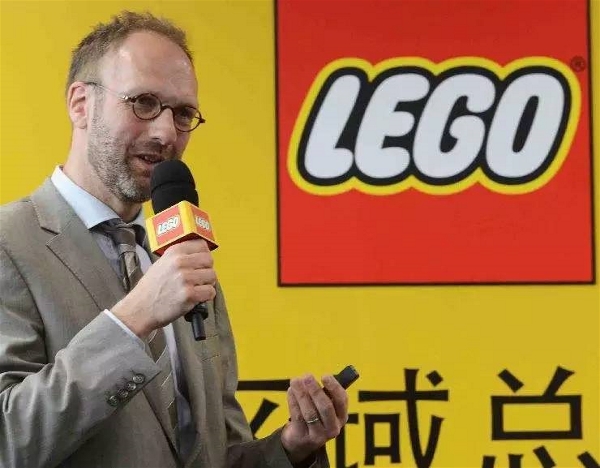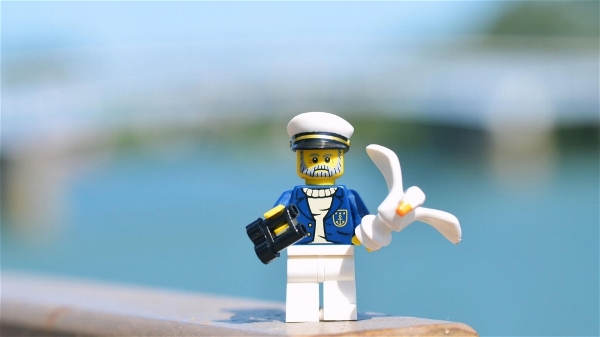The transformation of the LEGO Group is one of the most famous business stories of the century. A victim who has experienced excessive expansion and brand dilution, when Lego is about to face the brink of bankruptcy, in 2004, J?rgen Vig Knudstorp became the new CEO of the brand. At the time, the 35-year-old CEO’s past experience was not related to branding and retailing. He used to be an academic consultant and had a successful transformation, quickly gaining a reputation in the art world.

As the CEO who pulled Lego out of bankruptcy and successfully transformed, the 48-year-old Knodstorp will soon face the last few days of his CEO's tenure. He credits all his credit for Lego employees and consumers who are loyal to the Lego brand.
Knudstorp pointed out that employees are dedicated to serving the company and are the cornerstone of the company's successful operation. When consumers can be loyal to the LEGO brand, this also gives the brand the opportunity to serve the family members of the generations.
Knudstorp acknowledged that Lego’s loyalty to this consumer was too casual before the transition, leading to a narrow brand extension. At the same time, Lego has tried the apparel industry and proved to be a less successful business development.
Knudstorp, the first CEO of the Kirk Kristiansen family, the founder of the LEGO Group, is currently preparing a new umbrella alliance under the LEGO Brand Group to protect and extend the brand. Just as Knudstorp used his early years at Lego to bring the brand back on track, he is now personally supervising the expansion of the brand.

Knudstorp recently accepted a visit from a partner of the world-renowned consulting firm BCG, and the editorial dialogue is as follows:
Q: Thank you very much for accepting our interview today. It’s great to have you together! Last night I was talking with my brother in Australia. He is 58 years old. He said that he still keeps those children. The Lego toys that have been played and kept in the attic, these toys can be left to his grandson. Do you think this kind of loyalty to Lego toys is universal?
A: This is very common in our customers. Of course, since 1958, every LEGO toy brick produced by LEGO is compatible with Lego toys, and we currently have more than 70 billion Lego bricks every year in the world. Imagine how big this is.
Q: You have made this brand an amazing growth in the past ten years. What actions have you taken to promote this growth?
A: First of all, when I took over, the brand was on the verge of a collapse caused by over-expansion. It lost focus and its focus on development. Is this company really better than other companies? It may have done something, such as creating a unique material from LEGO Toys that allows the glued module set to be easily split; With the loyalty of the brothers you are far from in Australia, and around the LEGO brand and LEGO bricks, we have an incredible community of consumers. But we have not cultivated well, and we have lost our focus here. These are the things we started to solve, which made us experience an incredible decade of strong growth.
Q: When you take over, digital devices and smartphones work, how do you combine the real Lego bricks with these new technologies?
A: This was not new at the time. This has actually been going on for decades. In the 1990s, video games had a huge impact on the traditional toy market. From our point of view, this is another way to attract children. We are working on a video game with our partners. In fact, this piece has evolved into the second largest part of the game for kids at home. We have great content, great TV shows, and are laid out on the web; YouTube is our important channel, and this is one aspect of it.
Of course, on the other hand, the transformation of the entire e-commerce and the digitization of enterprise systems, all of which make the LEGO Group a digital enterprise, is a huge advantage for us.
Q: I believe that for you: Asia is very important. Where are the huge differences when you are in Lego's marketing?
A: We offer, of course, I prefer to call it a very timeless but also very common brand. When you put Lego bricks in the hands of children in China, Afghanistan, South Africa, the United States or Germany, they all play the same idea.
Everyone has an impulse to create, and this desire has made something. When you can create things, it is very great, very exciting! You are proud! You have achieved something! You can even show it! You can feel the satisfaction from the heart, this stems from The initial feelings of human beings apply to all cultures.
Q: Let's talk a little bit about organizational issues. As you and your organization grow, how do you stop the spread of complexity? Why don't you let the whole organization become bureaucratic?
A: We tried to associate our organization in an unusual way. We have a round structure, and when other companies have very typical executive committees, I meet with 20 senior vice presidents every month. This is a fairly flat management structure that allows me to go deep into the business, and at the same time, around the central executive department, to achieve unified recognition of all board management, such as around financial estimates And goals, we develop demand plans, supply chain capabilities, and the types of consumers we want to be in the first place.
These types of operational problems can be solved in this central group. It's cumbersome to get together 25 people in a room or a video conference, but if you really manage the materials and the meeting process, you will find that this will have a huge speed advantage.

Q: I heard you said that culture is very important. What are the characteristics of the culture you are talking about? How did you get it to penetrate the globe?
A: The LEGO brand owner, as a family-controlled company, has always emphasized that we are here to serve the children. We are here to train children, we are here to give children the best, we want to be an irreplaceable and irresistible brand for children. We hope that we are listed on the children's wish list and they can discuss our toys enthusiastically. We use a loyalty card called Net Promoter to measure. In this way, we can measure how much value we have created for our consumers and suppliers.
We really want to make sure that we are creating value for the consumers and suppliers we work with. Then we measure the engagement of our employees, which is actually the basis of our reward system. We also reward the creators of financial value, but we highly praise the children as the result of our financial value creation, the value creation of our business partners, and the creative and dedicated employees. If we have these three things, we can involuntarily create profits every day.
Q: You have had a very interesting statement, and I want to make sure that I understand it correctly: "Responsibility is not a failure, but failure to help and timely help is the real failure." You are How to achieve real execution in a corporate performance-oriented culture?
A: The culture I am trying to create is like this: Every year, when we celebrate the refresh of another record we have made, I stand on the beer box and say to my staff, "Thank you for making so much for me. I didn't ask for you." I never want to control, I just want to create a good environment, create clear culture and strategic choices, but when I want my employees to create surprises for me. I don't want to give such a corporate atmosphere that I say what my employees do, because it is a bureaucracy that kills innovation, which creates fear.
Q: What is the biggest challenge for LEGO?
A: We have seen some of the more volatile emerging markets. In particular, we have also seen political changes more volatile and unpredictable. This seems to be a higher level of protectionism. This is a new world. We have always been one of the countries that benefited from open borders and trade agreements and the overall growth of world trade. We produce very durable good things and people's lives, but at the same time, we are also producing petroleum-derived products, so we need to consider the impact on the environment and take a responsible position.
Q: Who do you admire most?
A: When I enter the problem-solving model, one question I often ask is: How can I think about the problem like Apple or Burberry; typical Chinese cruel competitors, how do they think about this problem?
Q: You have been a CEO for 12 years or so. When you reflect on this journey, if you are sitting opposite a person who is about to start the journey, what kind of advice would you say to them two or three times?
A: You really need to seriously consider some simple questions. These questions will be: Why does your company exist as a company? What is the real reason for your company's convincing existence? Of course, in the end, you have to take into account some very relevant things, at the same time, very unique, and can create value for others.
What is our philosophical creed? How can I say something about strategy or behavior that goes through the organizational structure and allows me to authorize and decentralize? This battle is not won in the CEO's office, it is won in each individual market, in each and consumer interaction.
Source: Lianshang
Razor Cartridge,Razor Cartridges,Shaving Cartridge,Shaving Cartridges
GUANGZHOU WEIDI TECHNOLOGY CO., LTD , https://www.weidirazor.com